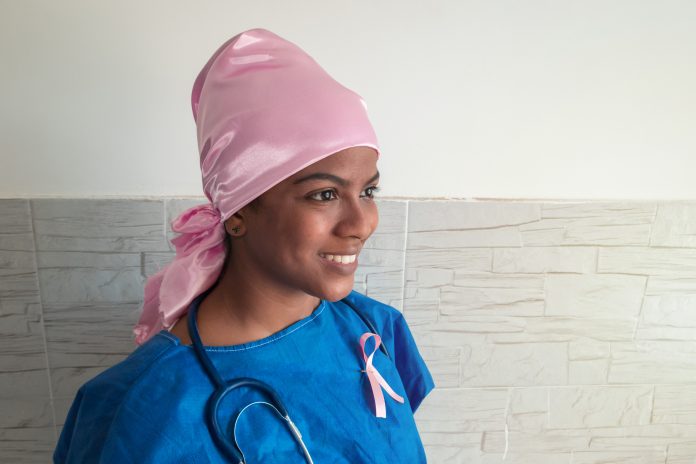Zisis Kozlakidis, International Agency for Research on Cancer and Chite Asirwa, International Cancer Institute, walk us through the cancer challenges in Sub-Saharan Africa today
The incidence (frequency of the disease) and mortality rates (death toll) for cancer have increased substantially over the second half of the 20th century and are likely to continue to surge according to World Health Organization (WHO) projections. In 2012, the world health cancer report estimated an unprecedented 14 million new cases and 8.2 million cancer-related deaths, with the figure expected to rise by almost 70% over the next two decades. (1) This projection, prompted all governments, members of the WHO to engage with and adopt the Global Monitoring Framework on non-communicable Diseases (NCDs), which includes a commitment to reduce premature NCD (including cancer-related) deaths by 25% before 2025. Even though this is considered largely a stretch goal, it demonstrates the need, the scale and immediacy required to tackle this major healthcare burden.
Growing evidence demonstrates that the increase in cancer cases is not uniform across the world but affects certain areas and population groups disproportionately. For example, most new cancer cases now occur in low- and middle-income countries (LMICs), increasing from 15% (1970) of the total global estimate to 56% (2008), and anticipated to reach approximately 70% by 2030. (2) Given these stark figures, especially in Sub-Saharan Africa, there is an urgency to identify knowledge gaps and needs and improve existing infrastructure. This, in turn, will ensure that high-quality, population-based cancer incidence data are consistent and available to inform public health policies while initiating sustainable cancer treatment models when that is possible. Cancer research, in particular, requires adequate resources to generate high-quality data, however, the benefit gained through data-driven policies can be substantial. This is especially true, as prevention and early detection of cancers can significantly reduce the overall cancer burden and improve patient outcomes. Here we use specific cancer types as examples to illustrate the challenges currently faced within a Sub-Saharan African perspective.
Public awareness remains a challenge
Breast cancer is often used as an example, as it is the leading cause of cancer death in females’ worldwide. However, fatality rates tend to be higher in economically developing countries. Research has demonstrated that early detection is an important factor leading to a better prognosis, as treatment of early stages is typically simpler and more cost-effective than at much later stages. In LMICs, in particular, where healthcare resources are scarce, early detection is likely to be less complex, more affordable and lead to a positive treatment outcome. Studies undertaken in Sub-Saharan Africa suggest current low knowledge levels of breast and cervical cancer awareness in the community form a major challenge. This tends to impact on individual attitudes, especially affecting the uptake of screening programmes and resulting in the late diagnosis in many women. (3) For example, such low awareness can lead to fear, embarrassment and lack of trust in health services, cumulatively acting as significant barriers to seeking medical advice early on.
A need for efficient and cost-effective prevention
The aspect of early prevention, which can be both efficient and cost-effective is best illustrated in the case of cervical cancer. Virtually all cases of invasive cervical cancer are associated with infection by high-risk strains of human papillomavirus. Vaccination campaigns, national screening programmes as well as effective treatment for early-stage invasive cancer have dramatically reduced the burden of cervical cancer in high-income countries. Nowadays, 85% of the mortality from cervical cancer occurs in LMICs. Importantly, most of this cancer burden is preventable. The human and societal cost of cervical cancer remains difficult to estimate. In sub-Saharan Africa, the average age at diagnosis is in the mid-40s; most women in this age are working, supporting their families. (4) Yet facilities to treat (cervical) cancer are scarce, and when surgery or other medical care are available, families can face a significant risk of worsened living standards from the costs of treatment and/or loss of work.
However, there is discernible improvement, despite these challenges. There are significant strides achieved in education, training, research and the introduction of modern treatment options in many locations within Sub-Saharan Africa. The increasing numbers of professionals being trained regionally and internationally- and their connectivity to international networks- are contributing to the further improvement of clinical practices, for example, in the cases of the International Cancer Institute in Eldoret, Kenya, the Uganda Cancer Institute in Kampala, Uganda and others. Cancer will remain a major healthcare challenge globally and especially in LMICs. Achieving impactful improvements would be the result of coordinated initiatives and programmes, while the current disparity in outcomes between patients living in developing and developed countries provide a continuing momentum for tackling any existing barriers.
Disclaimer
Where authors are identified as personnel of the International Agency for Research on Cancer/WHO, the authors alone are responsible for the views expressed in this article and they do not necessarily represent the decisions, policy or views of the International Agency for Research on Cancer/WHO.
Acknowledgements
The author would like to thank Prof Chite Asirwa, International Cancer Institute (ICI), Eldoret, Kenya and Dr Elodie Caboux, IARC/WHO, Lyon, France, for their critical review of the manuscript.
References
- World Cancer Report. 2014. Available: http://publications.iarc.fr/Non-Series-Publications/World-Cancer-Reports/World-Cancer-Report-2014
- World Health Organization. Cancer: fact sheets Geneva: WHO; 2013 [29 November 2013].
- Akuoko CP, Armah E, Sarpong T, Quansah DY, Amankwaa I, Boateng D. Barriers to early presentation and diagnosis of breast cancer among African women living in sub-Saharan Africa. PloS one. 2017 Feb 13;12(2): e0171024.
- Randall TC, Ghebre R. Challenges in prevention and care delivery for women with cervical cancer in sub-Saharan Africa. Frontiers in oncology. 2016 Jun 28;6:160.











